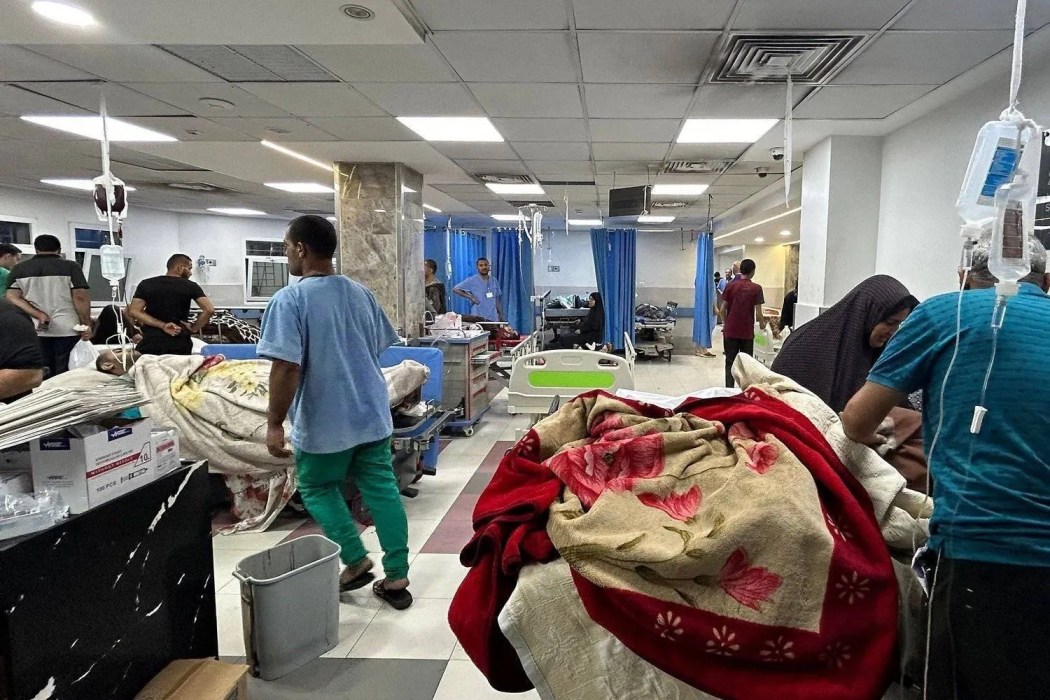Doctors at Gaza City's last operational hospitals say they are stretched to the limit, treating wave after wave of casualties from Israeli strikes amid worsening conditions and scarce medical supplies.
Operating in damaged facilities with minimal equipment and barely any anaesthesia, medics describe the scene as a nightmare of continuous suffering.
At al-Shifa hospital, once the largest medical complex in Gaza, medical teams work in wards marked by craters, burned-out rooms, and bullet holes. Beds often lack mattresses, essential medicines are running out, and staff face an endless stream of critically injured patients.
"It's just a mass murder, a killing, a torture, a nightmare," said Dr Nada Abu Alrub, an Australian emergency specialist volunteering at the hospital. She described performing operations with "minimal to hardly no anaesthesia."
She added, "No painkillers as well, with their limbs hanging with a piece of skin and the tendon. Brain matter out. Organs are out. It's horrific."
Dr Abu Alrub recounted how doctors last week conducted an emergency Caesarean on a nine-month pregnant woman whose head had been blown off, saving the baby. "The baby was a bit bradycardic, so her heart rate was low. She was transferred to another hospital."
Australian anaesthetist Dr Saya Aziz said a six-year-old boy with fractures had waited three days for surgery as the hospital’s only orthopaedic surgeon prioritized life-threatening injuries.
"Every couple of hours there are multiple amputation cases with massive resuscitation. It's life or limb, literally," she said. "And you go in and you're trying to anaesthetise them [while] they're swatting flies in theatre. There's blood over the beds. There's no equipment. There's no replacements. And you can see the sorrow and the sadness of the healthcare workers."
Outside the hospital, Israeli tanks are advancing, closing in on central Gaza. Footage on social media showed tanks less than 500 metres from al-Shifa and troops just 700 metres from the city centre.
Witnesses report the city is being evacuated by tens of thousands daily, but many face life-threatening delays and unaffordable costs.
"My wife and son went to our flat to collect some belongings. They suddenly found themselves trapped as tanks surrounded the area," said Palestinian journalist Fathi Sabah. "They lived through the hardest night of their lives before escaping through a back door. It's unbelievable how quickly the tanks reached the heart of the city."
Before the offensive, Gaza City had around one million residents. The UN estimates over 320,000 have fled south, while Israeli figures put it at 640,000. Israel has urged residents to head south to a designated "humanitarian area" at al-Mawasi, promising medical care, food, and water. But roads are congested, shelters overcrowded, and southern hospitals stretched far beyond capacity.
Sultan Nassar, a 62-year-old father of five from Sabra, said: "The tanks are only a few metres from my house but I cannot afford the cost of fleeing. Death is everywhere, in the north and in the south."
The Palestine Red Crescent Society reported that al-Quds hospital’s oxygen station in Tal al-Hawa stopped working after Israeli gunfire, leaving only three days’ worth of pre-filled cylinders. Israeli vehicles were stationed at the hospital’s southern gate, blocking access.
Other hospitals have also been forced to evacuate or close. Al-Rantisi children’s hospital and St John Eye hospital in northern Gaza shut down due to the bombardment, while Jordan relocated its field hospital in Tal al-Hawa after damage from shelling.
The Palestinian Medical Relief Society’s primary healthcare centre was destroyed in an air strike, injuring two staff members and halting essential services.
The Israeli offensive began in response to Hamas attacks on southern Israel on 7 October 2023, which left about 1,200 people dead and 251 taken hostage. Gaza’s health ministry reports at least 65,382 people have since died in Israeli attacks.

